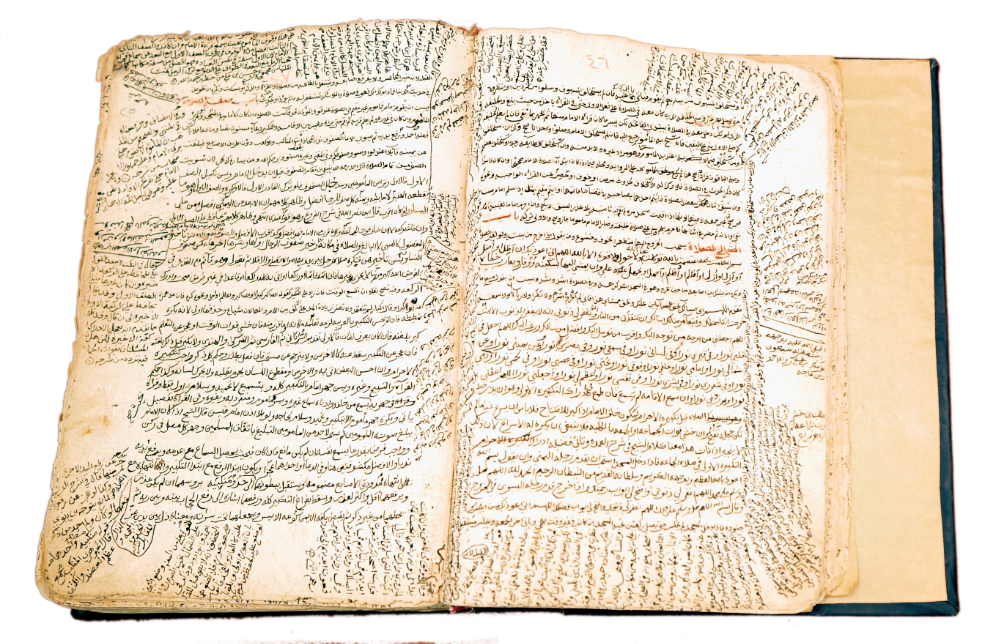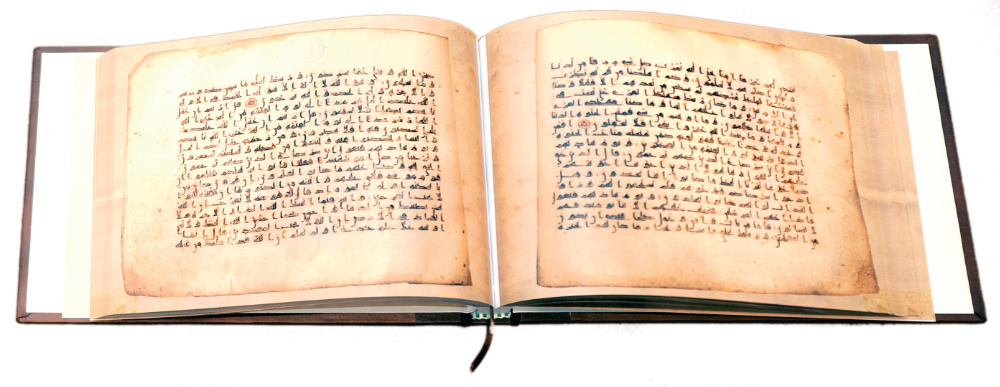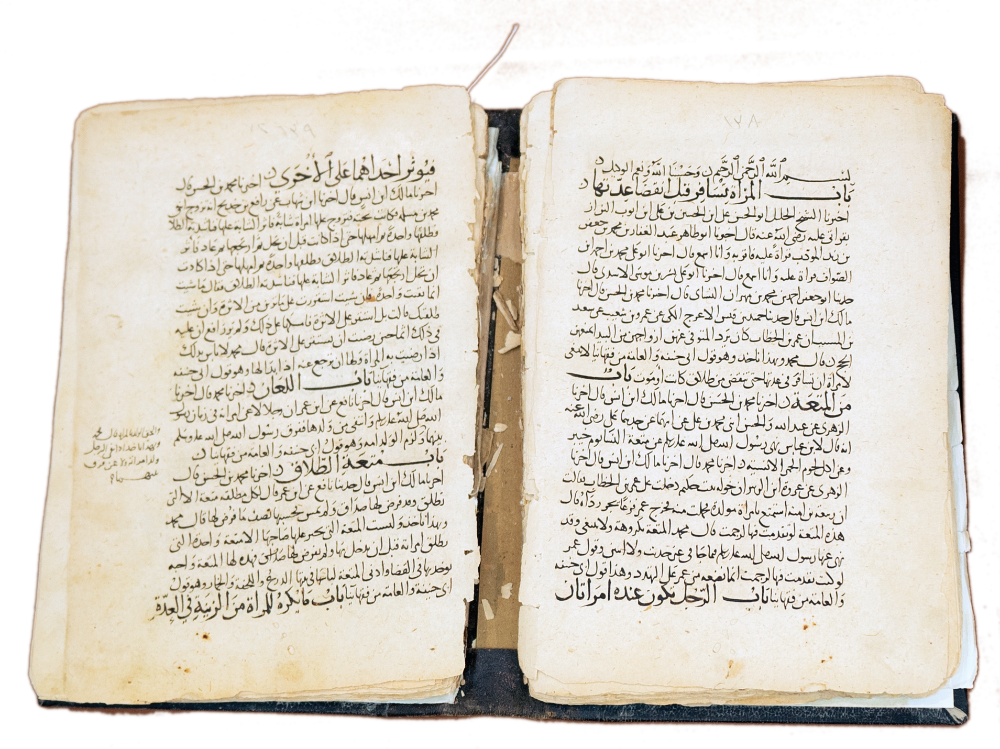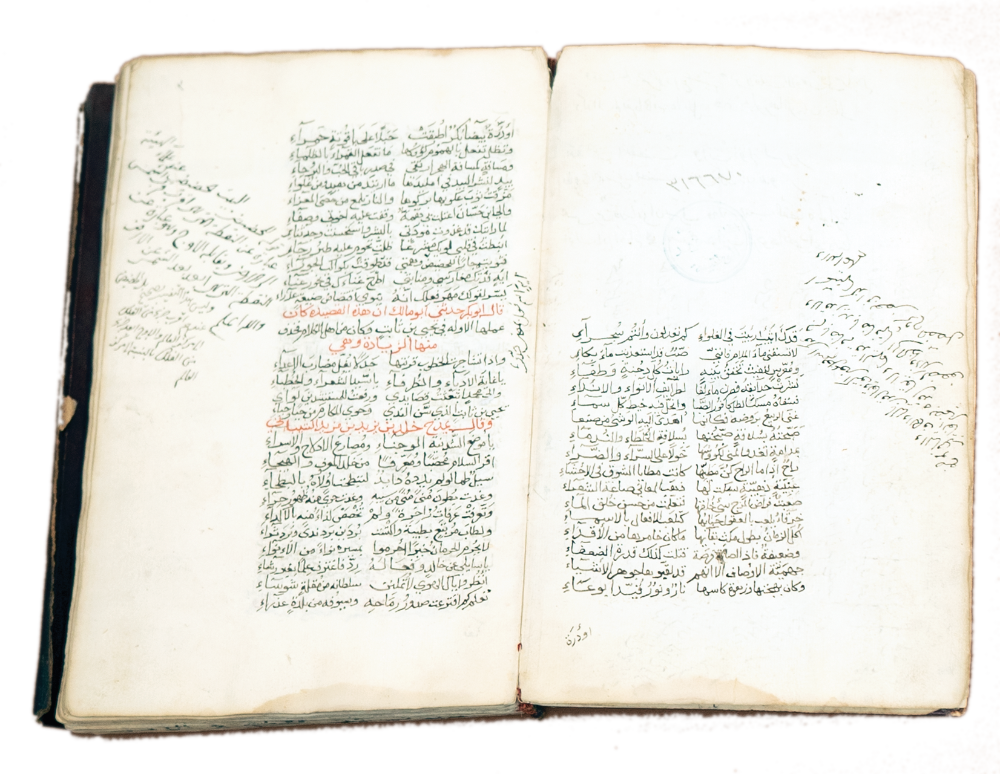RIYADH: The big truth about history is that it inevitably fades into the past, but history can also be captured and preserved for posterity.
In fact, it can be housed and lovingly nourished and tended to withstand the onslaught of time.
Saudi Arabia’s King Fahad National Library has been undertaking this endeavor for the past three decades, playing a seminal role in the preservation of Islamic heritage and ensuring that present and future generations continue to benefit from Islam’s contributions to civilization.
Established in 1990 in Riyadh, the library is home to more than 6,000 original manuscripts — many of them rare and ancient, including the exquisite Kufic Qur’an, dating to the 9th century CE — and a total of 73,000 paper and electronic transcripts.
“The King Fahad National Library has been interested in preserving manuscripts and heritage since its establishment in 1989, to a point where a royal decree has been issued to the library for the preservation of manuscripts,” Abdulaziz Nasif, the head of the manuscript department, told Arab News.
“The library estimates the manuscript’s value and sets its price when we receive it. Regarding the possession of manuscripts, we welcome everything that is presented to us and everything that is worth owning.”
FASTFACT
- King Fahad National Library has 6,000 original manuscripts and nearly 73,000 photocopied transcripts, with 7,000 of them digitized for online readers.
The Kufic Qur’an at the library, distinguished by its Kufic calligraphy, has one of the oldest scripts in Arabic, a highly angular form of the Arabic alphabet used in the earliest copies of the Qur’an.
It originated in Kufa, a city in southern Iraq, an intellectual hub during the early Islamic period, now known as Baghdad, the capital of Iraq.
“It’s not written on paper but on deer skin,” Nasif said. “Having holy verses written on leather is a form of honoring the text. But the cover is new.”
The Kufic Qur’an was bought from the southern part of the Arabian Peninsula almost 20 years ago and recently rebound to increase its longevity.

AL IGNAA LITALI AL INTIFAA
Written by Moussa bin Ahmad bin Al-Hijjawi in 968 AH.
Transcriber: Abdullah bin Suleiman bin Ahmad.
Font type and transcription date: Naskh, Friday 16 Shawwal 1901 AH
Observation: An important copy in two volumes, on the sidelines of which are many clarifications. The edges of its first pages are damaged and restored with adhesive tape. Black ink was used for writing and red was used for the heads of chapters. It has a modern binding.
Number of sheets: 177+149 Sizes: 30.5x20 cm
Number of lines: 29
Saved under: 699/ Al-Ifnaa
The library has other Qur’an manuscripts written in ancient script, besides special books such as the poetic works of Al-Ahnaf Al-Akbari, a famous poet in Baghdad who died in 995 CE.
It also has a copy of Ibn Daqiq Al-Eid’s book “Ahkam Al-Ahkam,” written in the late-14th century. Al-Eid is counted among Islam’s great scholars in the fundamentals of Islamic law and belief.
In addition, the library also owns “Yatimat Al-Dahr,” a book by Abu Mansur Al-Thaalibi, a writer of Persian or Arab origin famous for his anthologies and collection of epigrams.
Once the library acquires a manuscript, a rigorous and exacting approach to its conservation and maintenance is adopted.
“Each manuscript is first sent to the restoration and sanitization department and then returned to our department to be indexed,” Nasif said.

HOLY QUR’AN WRITTEN IN KUFIC SCRIPT IN THE 3RD CENTURY HEJIRA
Holy Qur’an, written on vellum (the skin of animals). Its writer took care to present it in a delicate and beautiful manner. The Qur’an manuscripts were produced on horizontally oriented vellum, a common form for such Qur’ans and eras.
It was written in black ink. Short vowels are marked in red ink. The letter
Hamza is written is yellow ink and the shaddah in green ink.
This Qur’an begins with verse 50 of Surah Al Imran and ends with
the end of Surah Abasa.
The two existing binding covers date back to a later time.
Number of papers: 165 Dimension: 25 x 17.5 cm Number of lines: 17 Archive No: 2500/library
However, not every manuscript is sent for restoration “because, sometimes, it can ruin (it),” he said.
The restoration is followed by the indexing process, which is a thorough exercise.
Nasif explained: “To fill the index card, we use information that is listed on the first page, starting with the title, the author’s name, the manuscript’s sizes (height and length), the transcriber’s name (the person who wrote it), and what is written at the end of the manuscript, so that we are able recognize one manuscript from the other having the same specifications.”

AL-MUWATTA
Al-Muwatta narrated by Mohammed ibn Al-Hasan, compiled by the Imam Malik ibn Anas
Date: 179 Hijri
Name of the reproducer: Abdulqader bin Mohammed Al-Qurashi Place of Reproduction: Al-Azhar Mosque
Type of script and the history of reproduction: Naskh, Thursday 10 Rabih Al-Thani, 719 Hijri
A precious copy written by the modern Hanafi jurist, Abdulqader Al-Qurashi, author of the book “Tabaqat Al Hanafiyah.” There is an interview on the original audio and the date of the transcription is the date of the interview. The copy is internally divided into ten parts, written in black ink.
Number of papers: 123 Dimension: 17.5 x 26 cm Number of lines: 21 Archive No: 193/Fatwa
Given the age and pricelessness of the manuscripts, their preservation methodology — which is at the core of library’s mission — is equally critical.
“Manuscripts should be kept in cold temperatures, to prevent insects and bacteria from surviving, because they can damage the paper and even the animal skin that was used in some manuscripts,” Nasif said.
The manuscripts are sterilized every year or every six months to prevent their deterioration.
The age of digitization places its own demands on repositories of knowledge such as libraries with their physical wealth of history, and the King Fahad National Library is keeping pace with these demands.

HOLY QUR’AN
Copy of Sherif Al- Mu’min bin Mohammed Naseer Al-Qummi, Naskh Al-Majood script, Shaaban 122.
Decorated with intense adornment of geometric and floral motifs. Gold roundel verse markers, text panels within gold and polychrome rules. Surah headings in red ink over a golden background.
It is decorated in a colorful botanical form surrounded by a gilded frame and decorated with a repeated plant unit.
Number of papers: 270 Dimension: 17 x 26.5 cm
Number of lines: 14
Archive No: 369/Library
It is working to complete the digitization of all its manuscripts. “Most of the transcriptions are still on microfilm but we are working on digitizing them on CDs and hard disks,” Nasif said.
The library also enables researchers, history lovers and general readers to access its precious collection though a range of electronic services.
Users can log in and browse through the vast collection and place their requirements. Researchers can request a specific manuscript, a rare book or a photograph to aid in their work.

DIWAN ABI TAMMAM
For Habib Ibn Aws Al-Ta’i, known as Abi Tammam, Type of script and the history of reproduction: Accurate vowelized naskh, 7 Ramadan 1065.
A similar and corrected copy written by Mohammed Jalabi bin Mohammed Agha, alias Qazdaghly, on which colophon has attribution to Mohammed bin Omar Al-Ardi Al-Halabi.
There are some comments in his handwriting. There is another colophon with attribution to Yahya Khaled, a teacher at Ared school. It was written is black ink and the poems with red ink.
Number of papers: 175
Dimension: 13 x 20.4 cm
Number of lines: 29
Archive No: 382/Library Diwan Abi Tammam
Gift from King Salman
The service is available to all members of the community from within and outside the Kingdom.
King Fahad National Library has also obtained microfilm photographs of one of the most important Arabic manuscript collections in US libraries, the Princeton University Library.
It also possesses 1,140 photocopied manuscripts on film slides from the Library of the Jewish University.
Last but not least, the manuscripts of the Riyadh Library “Dar Al-Iftaa” — a total of 792 documents — were transferred to the King Fahad National Library on the orders of King Salman when he was the governor of Riyadh and general supervisor of the library.






























